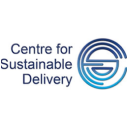Most migraine improves during or after the first trimester and therefore preventative therapies should be avoided where possible. Use lowers effective dose and withdraw in the last weeks of pregnancy. Lifestyle factors should be addressed prior to starting medication.
Please note that this table may require scrolling to view all content.
Medication overuse, excessive caffeine intake, psychiatric co-morbidity, pain, sleep disturbance and nausea should be adequately addressed prior to starting preventative therapies. Relaxation strategies and regular exercise should be explored.
Amitriptyline is widely used in pregnancy and is considered safe although there has been occasional reports of amitriptyline and congenital malformations, this is not reproduced in the bulk of available evidence.
Propranolol has wide use in pregnancy. Propranolol may cause intrauterine growth restriction (IUGR). Use in the third trimester has been associated with foetal bradycardia and hypoglycaemia. Small amounts are excreted into breast milk but no adverse effects have been reported.
Exposure to topiramate has an increased risk of oral cleft development in infants (OR 6.2, 95% CI 3.13 to 12.51). Children exposed to topiramate in utero are at high risk of serious developmental disorders (HR 3.53, 95% CI 1.42 to 8.74 for risk of developing intellectual disability, and HR 2.73, 95% CI 1.34 to 5.57 for autism spectrum disorder). It should not be used by women who are breast feeding as it can be present in breast milk. Patients who are using topiramate and who may become pregnant should therefore use highly-effective contraception. Advice on contraception is available from the Royal College of the Obstetricians and Gynaecologists Faculty of Sexual and Reproductive Healthcare,
https://www.fsrh.org/standards-and-guidance/fsrh-guidelines-and-statements/
At the time of writing the MHRA are reviewing the risks of Topiramate in pregnancy. For current contraceptive advice on patients prescribed topiramate check the MHRA website,
www.gov.uk/government/organisations/medicines-and-healthcare-products-regulatory-agency
Candesartan may cause complications in pregnancy (teratogenicity, oligohydramnios, IUGR) and should be avoided in pregnancy. No reports describing the use of candesartan in breastfeeding have been found but excretion into human breast milk is expected. There is insufficient data to conclude safety in breast feeding.
The use of methylprednisolone for Greater Occipital Nerve (GON) blocks is usually considered safe however available data are limited. Steroid use early in pregnancy may cause developmental abnormalities but the risk with local administration is less clear. The risk versus benefit of treatment should be assessed and discussed with each patient prior to administration. Magnesium supplementation would appear compatible with breastfeeding, although if taken during pregnancy it might delay the onset of lactation. No special precautions are advised.
There are no licensed magnesium products for use in pregnancy. The available evidence suggests that magnesium is not associated with congenital defects based on a large number of reports. No special precautions are advised in relation to magnesium use in breastfeeding.
Sodium Valproate is contra-indicated in women of child bearing age due the increased risk of foetal malformation and poorer cognitive outcomes of children exposed to valproate in utero. Sources of further advice on the prescription of sodium valproate in women who have the potential to become pregnant is available from the MHRA and in Sign155.
Toolkit on the risks of valproate medicines in female patients:
www.gov.uk/government/publications/toolkit-on-the-risks-of-valproate-medicines-in-female-patients
This website provides guidance for healthcare professionals and patients on prescribing and dispensing valproate.
There is limited evidence for the safety of Botulinum Toxin A in pregnant or lactating women. Whilst the risk is likely to be low, treatment using Botox is not recommended in pregnant and lactating women. Practice varies between headache centres varies and some centres do use Botulinum Toxin A in selected patients who are pregnant or lactating. Before considering Botox in pregnancy or lactation the clinician should fully discuss the uncertainty and the potential risks with the patient, written consent should be obtained and the patient should be entered on a pregnancy registry.

 Scan the code to visit our website
Scan the code to visit our website